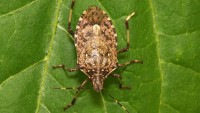Rare Orchid Confounds Modern Botany
| David Perry | | Nov 04, 2014 05:49 PM EST |
(Photo : NSW Office of Environment and Heritage) The Eastern Underground Orchid presents such an unusual physiology that scientists are mapping its genes to discover where it fits in the plant kingdom.
What has no leaves, no roots, no chlorophyll, only grows underground, and depends on a fungal infection to deliver nutrients? It's the Rhizanthella slateri, also known as the Eastern Underground Orchid, one of the most bizarre members of the plant kingdom.
Like Us on Facebook
Found only in 10 locations in New South Wales (NSW) in southeastern Australia, Rhizanthella is such a botanical oddball that scientists have sent specimens to a lab in the Netherlands for genetic testing to find where it fits in the continent's flora.
"It differs from most orchids in having no chlorophyll. It can't produce its own sugars and is entirely reliant on a fungus that infects it to bring water and nutrients to it," Greg Steenbeeke, a senior threatened species officer at the NSW Office of Environment and Heritage, told Daily Mail Australia.
"The plant grows underground and the flower is presented at the surface of the soil amongst the litter."
The plant is not threatened in the conventional sense, but is so rare it qualifies de facto.
The coin-size, dense, ghostly pink flower of Rhizanthella is all that can be seen above ground, but is nowhere near as showy as the varieties seen in the world's greenhouses. But if the flower is modest, below is as much of a letdown as it is a mystery. Instead of a root system characteristic of most plants the orchid sprouts from a simple tuber.
"This research is important because the orchid's habitat requirements are poorly understood and no particular vegetation type has been clearly associated with the species, although it is known to occur in some NSW forests and flowers September to November," Steenbeeke said.
"The plants have certainly been driven through their evolutionary history to adopt this method of living as a means of surviving. A plant producing no parts above the ground isn't going to be losing a lot of water because water is lost through leaves, so therefore it can be considered a way of saving water -- but it's a pretty drastic way to save water."
Orchids are among the oldest flowering plants on Earth, with uninterrupted lineages going back at least 120 million years to the time of dinosaurs. That timespan allowed the various species of the plant to evolve into highly specialized forms suited to several kinds of environments, from rainforests and caves to the polar wastes of Alaska and Greenland.
TagsEastern Underground Orchid, Rhizanthella slateri, Australia, New South Wales, Orchid
©2015 Chinatopix All rights reserved. Do not reproduce without permission
EDITOR'S PICKS
-

Did the Trump administration just announce plans for a trade war with ‘hostile’ China and Russia?
-

US Senate passes Taiwan travel bill slammed by China
-

As Yan Sihong’s family grieves, here are other Chinese students who went missing abroad. Some have never been found
-

Beijing blasts Western critics who ‘smear China’ with the term sharp power
-

China Envoy Seeks to Defuse Tensions With U.S. as a Trade War Brews
-

Singapore's Deputy PM Provides Bitcoin Vote of Confidence Amid China's Blanket Bans
-

China warns investors over risks in overseas virtual currency trading
-

Chinese government most trustworthy: survey
-

Kashima Antlers On Course For Back-To-Back Titles
MOST POPULAR
LATEST NEWS
Zhou Yongkang: China's Former Security Chief Sentenced to Life in Prison

China's former Chief of the Ministry of Public Security, Zhou Yongkang, has been given a life sentence after he was found guilty of abusing his office, bribery and deliberately ... Full Article
TRENDING STORY

China Pork Prices Expected to Stabilize As The Supplies Recover

Elephone P9000 Smartphone is now on Sale on Amazon India

There's a Big Chance Cliffhangers Won't Still Be Resolved When Grey's Anatomy Season 13 Returns

Supreme Court Ruled on Samsung vs Apple Dispute for Patent Infringement

Microsoft Surface Pro 5 Rumors and Release Date: What is the Latest?













